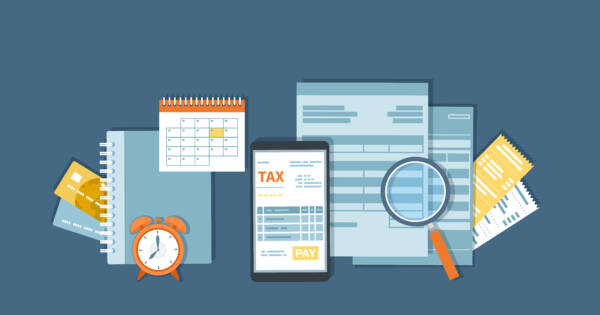Student life is often portrayed as carefree, but many young adults juggle academic pressures, rising education costs, and part-time jobs just to stay afloat. Tuition, books, and living expenses add up quickly, making financial awareness an essential skill long before graduation. Taxes also become part of the picture, sometimes earlier than expected. With the right approach, students can uncover opportunities to reduce their tax burden and keep more of their earnings during an already demanding stage of life.
9. Do You Need to File?
If you’re making more than a standard deduction, then you must file taxes. (In 2024, the standard deduction is $14,600.) Do keep in mind that’s earned income, meaning that you received it as wages or fees from working. Unearned income also must be reported, but only if it’s over $1,300. (Unearned income might be from investment accounts or interest). But even that might not be necessary; there are some ways for parents to report their children’s unearned income on their own return.
It’s also not a great idea to assume that you don’t have to file taxes if your earned income is below $14,600. Even if you made less than that, you might be due for a refund if tax was withheld from any of your earned income. Look and see if you’ve been paying taxes on your pay stubs; if so, you might just find that filling out a return will pay off.
8. Dependency
If you’ve decided to go ahead and file, it’s really important that you check with your parents or guardians to make sure you’re all on the same page about who’s claiming what. Keep in mind that your parents might still want to claim you as a dependent, even if you’ve got your own fancy income and tax return. The partially refundable tax credit they earn is nothing to sneeze at, after all.
That might be cold comfort to a student who really wants that $250 refund. But keep in mind that if a parent is providing more than 50 percent of your support, they will be better off claiming you for a bigger tax credit — that they might share with you, if you ask nicely. The one thing you don’t want to do is try to claim both — that you’re a dependent for your parents and also on your own. The IRS doesn’t appreciate that scam, and it’ll cause a lot of headaches for you and your parents.
If you’re really bummed that your IRS-sponsored beer money is now a part of a tax credit for your parents, do your best to convince them to give you a bit of the cash for yourself. (If that works, tell my parents to send me some money too).
7. College Tax Credits
If you’re a full-time college student, there are several tax credits that can help you relieve some of the burden of paying for higher education. One biggie is the American Opportunity Tax Credit (AOTC), which allows up to $2,500 per eligible student. It’s available for the first four years of post-secondary education, and 40 percent of it is refundable. That means that you can receive up to $1,000 as a refund if you owe no taxes. You can claim it if you have a single income of up to $80,000, or $160,000 for joint filers.
If you’re a fifth-year senior (or sixth or seventh — we don’t judge), you might be interested in the Lifetime Learning Credit (LLC). It’s set at the same income limits, but you can take it for any number of years of higher education. It is designed to credit up to $2,000 of eligible college costs, and it’s also quite helpful for grad students. Note that you can’t take both the AOTC and the LLC during the same year.
6. Consider Doing Your Own Taxes
Now listen: There are probably college students with incredibly complicated taxes. Maybe they’re like a young Bruce Wayne, with all sorts of interesting financial holdings and business stakes. When it comes to most college tax returns, however, most of us tend to skew more toward Peter Parker. Our accounts aren’t exactly diversified, and our wages aren’t raising IRS eyebrows.
For that reason, it’s probably not entirely necessary for you to hire a fancy accountant/tax preparer. You should probably consider filling out Form 1040, as long as you meet some qualifications — you’re filing without dependents, you make less than $100,000 and your income only comes from certain sources. It’s probably going to save you loads of time and money to do it yourself online.
5. Student Loan Interest
Had to take out some student loans to pay for college? Join the club. A lot of folks do, and the government is even willing to give you some tax relief for the interest accrued on the loans. And here’s some great news: The Student Loan Interest Deduction can be claimed even if you don’t itemize your taxes. That means that the deduction will be taken out of your adjusted gross income, leaving you less taxable income in general.
You can write off up to $2,500 worth of student loan interest. But don’t think that you can get away with trying to shoehorn that car loan interest in: Any loan must have been taken out solely for educational expenses, and it can’t just be a loan from a relative or employer. This exemption also only qualifies you for the interest you paid during the year; you’re not going to be able to write off future payments.
4. Work-study
Work-study sounds like a terrific deal: Your school will pay you to do somewhat menial, but possibly even interesting, tasks in exchange for a paycheck or tuition break. But beware: Work-study programs are taxable. That means you need to make certain that your college or university is withholding taxes from each paycheck. And if they’re not? Best you set aside a chunk of each check to pay the IRS come tax time.
Even if the work-study program is simply taking money off your tuition, it’s still considered income. It’s prudent to check with a supervisor or financial aid adviser so you know what you’re getting into before the program starts.
But do take comfort in the fact that the government isn’t trying to take all your educational expenses. Most scholarships and fellowships are tax-free as long as you’re actually using the money for qualified educational purposes.
3. Open a 529
One tax tip that you might want to take advantage of before you enroll for college — perhaps even long before — is a 529 plan. These nifty plans are either operated by a state or educational institution, and they allow you to put money into an investment savings account. You can set one up for anyone — your kid, yourself, a stranger. (And if you can afford to help pay a stranger’s college tuition, go for it). Both college savings plans and prepaid tuition plans are offered; prepaid tuition is generally offered as an in-state option, and you might have to be a resident to take advantage.
College savings plans can be a little broader; you might have more investment opportunity, and the money can generally be used at any educational institution. While contributions aren’t tax deductible, you don’t have to pay tax on any income the investment account accrues. More importantly to students and families, you don’t have to pay tax on any withdrawals that you use for higher education. Do keep in mind that the owner of the plan has more control than the beneficiary: If Grandma decides the 529 she opened for you should go to your cousin instead, you can’t stop her. Be nice to Nana.
2. Dual State Taxes
Like paying taxes so much you want to pay them twice? Doubt it. But unfortunately, many students qualify for dual state taxes. If you’re making money in both the state you go to school and the state where your permanent address is, you better believe that both states want to make sure they’re getting their share of your income.
This is one case where talking to a tax professional — or just asking for help from parents or friends — might be worthwhile. It’s important to note that there are myriad exceptions between states: Some states don’t even have an income tax, for instance, while other states have reciprocal agreements with each other regarding income tax.
The one thing you don’t want to do is assume you covered it if you paid in one state. Check with the tax requirements in both states to make sure you’re not getting a call from Uncle Sam.
1. E-File
It’s possible that your parents will try to convince you that filling out your taxes with good old pen and paper is the best way to go. They might argue that you’re less vulnerable to an audit, or maybe even that it’s making the government’s job too easy to just accept your digital return. They are probably wrong.
In most cases, this is a no-brainer for students. Obviously, e-filing your return is going to save you a lot of time and effort. For one, your return is processed much faster. No snail-mail turnaround times. That means you get a refund faster, which is probably priority number one for any kid looking to make rent money. You can also direct-deposit the money, so it’s whisked straight into your account. Furthermore, you’re probably going to actually get your taxes right: The IRS estimates that 20% of pen-and-paper returns are inaccurate, versus 1% of electronic filings.





